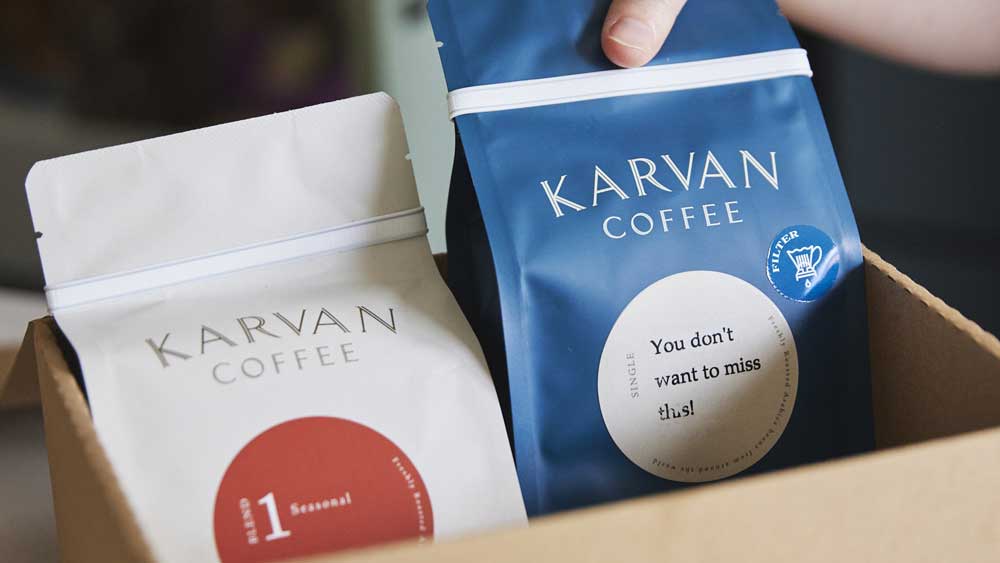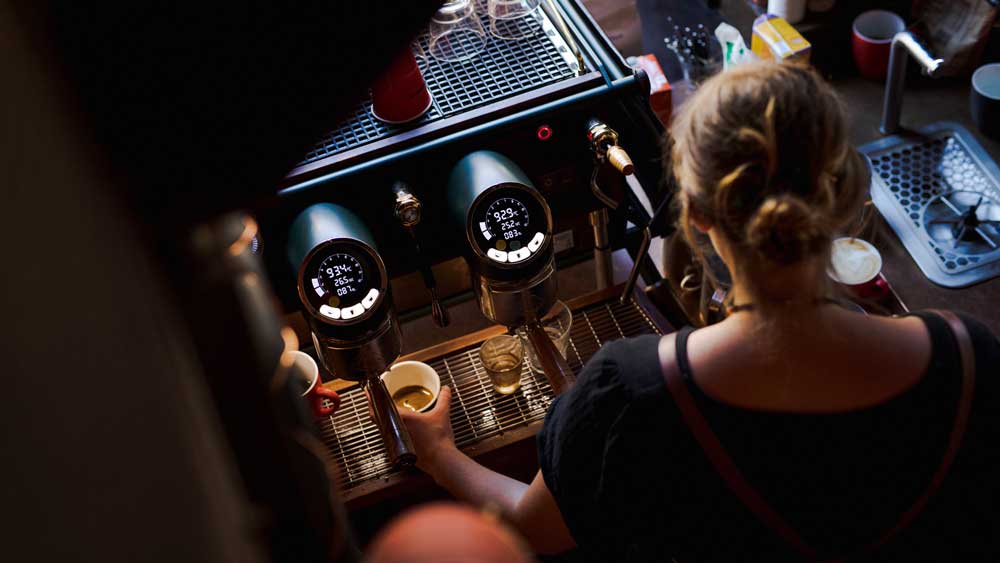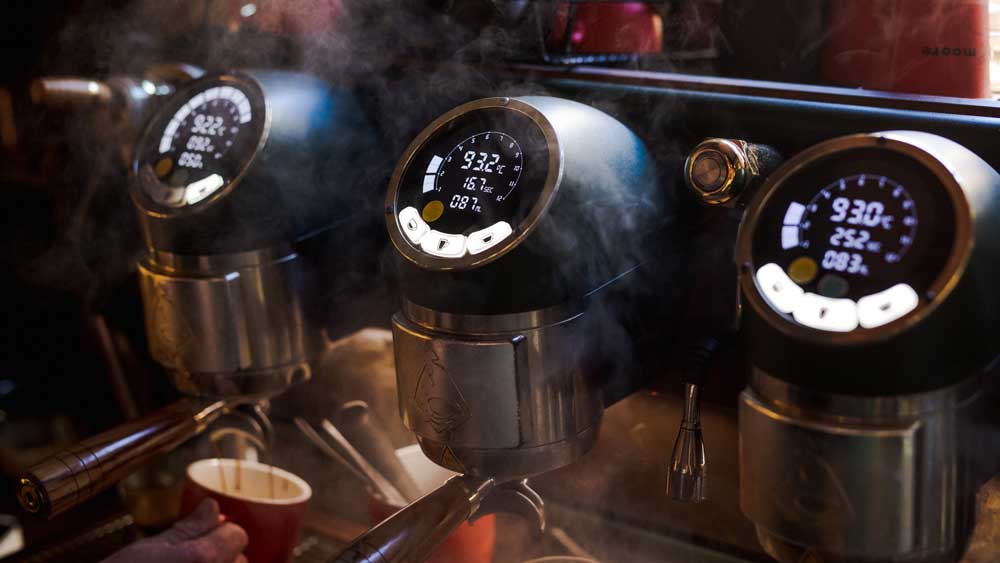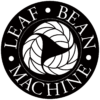A guide to dialling in your espresso
To “dial in” or “dialling in” your espresso means to hit that sweet spot where you’re extracting the best soluble flavour from your coffee. This means, ensuring you have the correct grind size, dose weight, brew time and desired yield. Once you have “dialled in” your espresso, this means you have corrected your espresso recipe for your specific beans. Resulting in delicious espresso.
Single origins VS. blends
When purchasing coffee, you will often have the selection of two different kinds of coffee. These are, single origins and coffee blends.
Single origins are coffee beans from one farm. For example, a bag of single origin beans will be from one particular crop from one farm in one specific origin. This is to showcase the delicate flavours of the type of coffee.
Blends on the other hand, can be a delicious mix of a variety of different regions. For example, looking at your Karvan Blend 3 bag you’ll notice the beans are from the origins of Colombia, Peru and Sumatra. These origins have been blended together intentionally to meet specific taste notes.
One coffee isn’t necessarily better than the other, but it comes down to personal preference.

Dialling in your single origin is crucial
Single Origins differ from region to region so dialling in your espresso is crucial to experience the espresso’s true complexity and delicious flavour. A coffee from Kenya may have floral and citrus notes, whereas a coffee from El Salvador may display more hazelnut and chocolate flavours. This is due to many reasons, including the botanical variety of coffee, how it is processed at origin, and how it is roasted for the consumer.
Of course, how you choose to brew your single origin coffee will also affect the flavours you notice in the cup. For the purposes of this blog, we will be focusing on espresso brewing.
Follow a recipe, but experiment with ratio
Dialling in your single origin can involve a little experimentation. Given the unique complexities of single origin coffee, each will have its own unique espresso recipe. This recipe, created through trial and error, will ensure the single origin is brewed to its fullest potential. A good recipe will foreground the unique flavours of the specific area of the world the coffee was grown.
For any espresso recipe, dose (the amount of ground coffee) will always remain in line with the basket size you are using. So if you are using a 20g VST basket in your portafilter, you will dose 20g of ground coffee. The yield and time for each single origin may need some tweaking.
To make dialling in single origin easier
We recommend a 1:2.25 ratio for single origins. For example, a 20g dose should yield 45g of espresso. This is always a good place to start, with a shot time that runs as long as possible without the coffee tasting bitter. When your espresso begins to taste bitter, try making the grind coarser and the shot time shorter.
If your espresso is tasting sour, try increasing the yield by a few grams to see if that acidity smooths out a little.
Is your espresso lacking depth? Try decreasing the yield by a few grams to find the right balance of flavour.
Lock it in
Once you have your ratio locked in, start making adjustments to your grinder to get the shot times right. We find the best tasting shots often run between 27 and 33 seconds; this may vary according to the origin of the beans and the basket size you’re using. Always let flavour balance be your guide.
Using this method for dialling in your single origin will help you to troubleshoot your espresso . We hope these tips will help you to achieve the desired balance of flavour from your single origin coffee beans.
Learning to identify the nuanced flavours in different coffees is a great way to develop your palate. Dialling in your coffee is fun and interesting, connecting you more to the beans you’re pouring into espresso. Single origin beans offer consumers the perfect opportunity to experience the many flavours that coffee has to offer.

Dialing in an espresso blend
The process of dialling in espresso blends is very similar to dialling in single origins. The biggest difference with single origins and espresso blends are the ratios involved.
Espresso recipe for blends
With all espresso recipes those three magic words – dose, yield and time – are your coffee Bible!
As mentioned with single origin coffee, dose weight will always be dependent on the size of the VST basket. 20g basket means you’ll measure out 20g of ground coffee.
However, the ratios you use for espresso blends differ from single origins.
For espresso blends we use a ratio between 1:1 and 1:2. For example, if your basket is a 22g basket (+/- .2g of coffee grounds), you’ll aim for a yield (the espresso shot) of 44g (+/- 1g).
The brew time has the largest window of 25 seconds – 35 seconds. We recommend aiming for 30 seconds, tasting the espresso and adjusting if needed. When tasting the extracted coffee, analyse the shot of espresso for sour or salty notes. If your shot taste sour, try extracted espresso for 35 seconds. If you experience bitter flavours, your coffee might be over extracted, try a brew time of 25 seconds.
If your shot is simply a delicious espresso taste with refreshing acidity levels and balanced flavour – record the recipe to keep the ratio consistent.
How to change the brew time – grind adjustment
If you find that your brew time is too short or too long, you will need to change the grind setting and grind size. Changing the grind setting can make your grind finer or grind coarser. The grind size plays a large part in your coffee brewing and in turn, in your espresso shots.
1) Longer brew time
If you want to make your brew time longer, make the grind finer. Finer grind will make it harder for the water to push through the coffee grounds, resulting in a longer shot time.
2) Shorter brew time
If you want to make your brew time shorter, change your espresso grind to a coarser grind setting.
Make sure any change you make to the grind size on your coffee grinder, is miniscule. Coffee grinders are incredibly sensitive and even small increments to your coffee grinders will greatly impact the grind size.

Dialing in espresso blend for cafes
If you work in a cafe, it’s essential you dial in the espresso before you open your doors for service.
Dialing in the espresso machine for the first time for the day will take much longer as the coffee machine has been turned off during the night. We recommend dialing in the coffee before you open, so that you’re ready for the first customer.
Tips for cafes
Hey cafes, we’ve got your back! Here are a few tips to keep you on track.
- Ensure there’s a full bag of beans in your coffee grinder.
- Use specialty coffee from your local coffee roaster.
- Throw away the first few baskets of ground coffee.
- Follow your recipe closely.
- Encourage a good coffee routine amongst your staff.
- Get regular training at a coffee roastery (like us!)
Support your local coffee roaster
We’re currently loving our Karvan Blend #3. With origins of Colombia, Costa Rica and Sumatra coffee beans there’s a soft and elegant fruit aroma. Clean, direct acidity with a nice round body and a big hit of earthy, wet jungle flavours and a sweet, malty finish.



